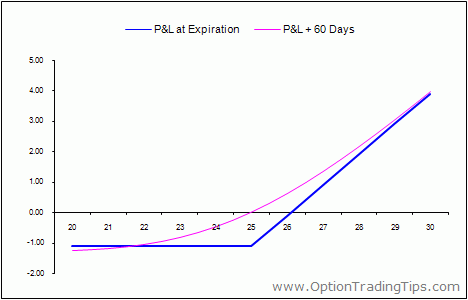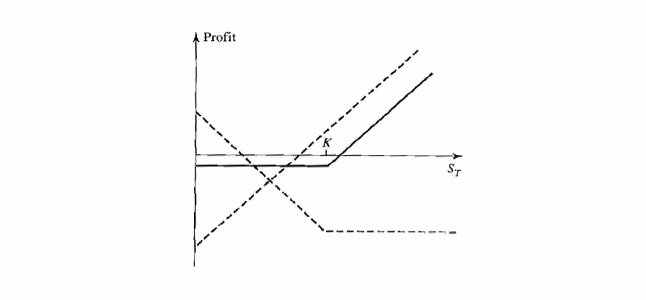Protective Put Strategy
Post on: 23 Май, 2015 No Comment

You buy stock because you’re bullish and expect the stock’s price to go up. Since you’re bullish, chances are you aren’t too preoccupied with the downside. But as we all know, markets can shift quickly. Puts are a handy tool to help lock in profits on your existing positions in the event of a sudden reversal.
Lock in profits on an existing position
Consider this example: You bought 500 shares of stock XYZ at $50, and it rises to $70. As you’re admiring your tidy potential profit, the stock drops slightly to $65. Hmm. Your first response might be, “No problem. I’ll just wait until it gets back to $70, and then I’ll close out and sell.” But the stock drops further to $60. Perhaps you revise your target price downward to $67, but before you know it, the stock goes back down to $50, and you’ve lost the entire run-up of potential profits. Sound familiar?
It’s an all-too-common scenario for investors: A stock makes a sudden run upwards, you get excited (and maybe a little greedy) and then it reverses before you can lock in your gains. Now consider this revised scenario: when the stock was at $70, you could’ve said to yourself, “Hey, that’s an amazing run. Now I want to protect some of those potential gains.” To do so, you’d buy five 60-day puts with a 65 strike price for about $2 per contract. This would cost $1,000 plus $8.20 in commissions (each put contract represents 100 shares of stock). For only a couple of bucks per share, you’d gain the right to sell your stock at $65 for the given time period – irrespective of what the actual market price per share might be.
Why buy 65 strike puts, instead of 70 strike puts? Buying 65 strike puts should cost you considerably less than buying the 70-strike put, but the 65s still lock in most of your gains. Puts are not insurance, but think of the situation in car insurance terms: if you buy zero-deductible insurance, it usually costs a fortune. Even a small deductible lowers your premium costs substantially. That five-point difference in the two strike prices, 65 versus 70, should provide a similar benefit here.
Now let’s assume you’ve bought your five put contracts with a strike price of 65. Should your stock take a sudden dive to 50, you’d have your pick between two choices:
1. Exercise your puts and sell the stock at $65. In this scenario, you’d keep the lion’s share of your gains: $65 – $50 = $15 x 500 shares = $7,500 less $1,008.20 for the cost of the protective put and commissions. Not a bad exit.

2. You could also simply sell your puts for a profit and pocket the cash. (After all, if the market is currently at $50, and you’d have the right to sell at $65, the price of your puts has probably increased in value.) Selling the puts would offset a large portion of the loss on the stock and allow you to keep the long stock position, if that’s important to you longer-term. Of course, don’t forget to deduct the cost of the puts and the commissions from your profit.
What are the risks of Protective Puts?
As with most option trades, timing is everything with protective puts. You may purchase puts only to see the stock continue higher, which is great as a stockholder. However, you may feel as if you wasted your money by purchasing the puts after they’ve expired worthless. Furthermore, if you want to continue to protect your profits using puts, you’d have to buy more puts, pay more premiums, and incur more commissions. That protection would only last until expiration of the contracts you bought.
In certain circumstances you may decide that having protection is worth the extra cost. To go back to our analogy, when you buy insurance on your car, you’re not hoping it will be stolen before the end of the term. If you’re inclined to protect your investment with puts, you should make sure the cost of the puts is worth the protection it provides. Protective puts carry the same risk of any other put purchase: If the stock stays above the strike price you can lose the entire premium upon expiration. If you renew your protection after the first puts expire by purchasing more puts, your costs can add up over time.
As long as you’re using puts judiciously and stay aware of these risks, they may offer a compelling hedge for profits on your long stock position.














